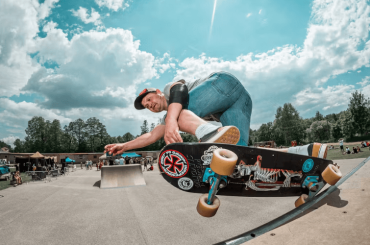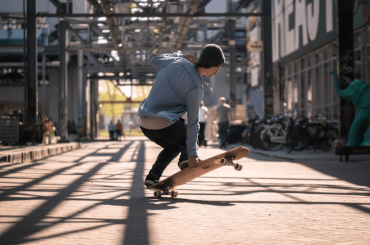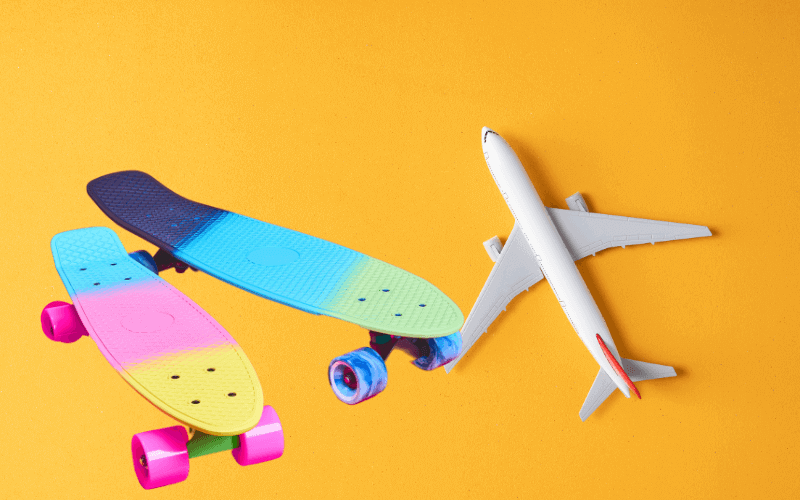If you are a fan of longboarding, then one question must have stricken your mind that which type of wood would be best for your longboard? Well, we know your concerns, and that’s why we are here to provide you with complete knowledge regarding the best wood for longboards.
We are sure that you don’t want to invest in a longboard that can easily split into pieces while taking a ride. Because choosing the wrong longboard is assured if you do not get the importance of the wood that structured your board. It is directly connected with everything like your weight, style of longboarding, the purpose of buying it etc.
For your guidance, we have collected a few points to help you make the right decisions while buying a longboard. So, keep reading.
What Is The Best Material for a Longboard Deck?
Many brands are offering longboards made up of new and affordable materials like Indian rosewood, fibreglass. But mainly longboards are 90% made up of wood.
1) Maple Wood
Maple wood is the best choice for downhill skateboarders who want to achieve speed quickly in a short time. Maple wood ranges from 5 plies up to 10 plies is famous for its stability. And enables riders to rest assure durability.
However, maple wood is easy to handle because it is heavier in weight. So, makers of longboards often amalgamate maple wood with bamboo and plywood to make it significantly lighter.
2) Bamboo
Suppose you are a beginner, then what could be more suitable for you than a bamboo skateboard because it is lightweight and has high durability against cracks and bumps. Further, it is ideal for cruising and carving.
However, a bamboo longboard helps to maintain balance in the environment. Plus, bamboo skateboards are solid and ideal for low-speed straight-lining. 5 plies or 9 ply bamboo longboard is very flexible and holds the rider even on rough roads.
3) Birch
Birch longboards lie in the mid of bamboo and maple longboards. Because 9 plies to 12 ply birch longboard are much heavier than bamboo board, yet it is undoubtedly much lighter than 5 to 8 ply maple board.
Birch boards are reasonably stiff and flexible at the same time and serve best for those who want good longboards at a lesser price. Furthermore, it is effortless to change the trucks and wheels of this board.
4) Carbon Fiber
Carbon fibres are the choice of pro skaters, and it is the most expensive material to produce longboards. However, the weight distribution on the carbon fibre longboard is much swift and enables riders to grab the speed much faster from the starting point.
Turns and moves on carbon fiber longboards are much effortless. However, the strength of carbon fibre longboards is fragile and less susceptible to damage.
How Thick Should a Longboard Be?
The average thickness of longboards usually depends upon the layers of ply, and usually, the thickness of each ply should be 0.079 inches in thickness. However, the thickness of the longboard varies with the length, width and purpose of the longboards.
Purpose of Longboard
i) Carving
The craving longboard has a thickness of 1/2,” and it offers very little room for flexibility. However, the carving board has much concave, which will help the rider to turn quickly in hard turns. The wheelbase of carving longboards are usually closer and allows the rider to take turns easily. These boards have a length ranging from 36 to 44 inches.
ii) Cruising
The thickness of the cruising board may range from 1/2 inch to 5/8 inches. However, cruising longboards are widely used for commuting purpose. Often the cities where the traffic is quite congested, cruising boards serve the best. Longer cruising boards have a different size range from 29-33inches.
iii) Freestyle
It is the most adorable form of longboarding where the rider will have enough space to show their dance moves. However, the freestyle/ dance longboard thickness should be 7 inches, and the length may range from 40-42 inch. The shape of freestyle boards are symmetrical flat and have less concave.
iv) Downhill
Downhill longboards are used for sliding from the top of the mountain. They are getting famous among youngsters due to their speed from 60-80 miles per hour. However, the thickness of the downhill longboard does not matter much because length plays a pivotal part. A thickness from 9-10 inch is used for the board, and the size lies between 38-42 inches.
Is Bamboo Or Maple Better For Longboards?
The choice of longboard should depend upon personal need. However, some features are lined below to consider before choosing between maple and bamboo longboard.
A) Durability
Maple longboards are the toughest and most durable. Because th fibre of maple woods is relatively compact, increasing the strength of the longboard. Maple boards are a choice for classical skateboards and which riders perform tricks, yet they last longer.
Bamboo is lighter in weight, but that does not mean it is weak in strength. Because bamboo longboards can bear rough roads and increased weight. Further, the manufacturers also mix fibreglass and other material to increase the resilience of bamboo longboards.
B) Cost
Maple longboards are available in the most cost-effective manner. People will go crazy over maple longboards because they are low in cost and high on stability. But the environmental factor should be considered because maple trees grow much slower than bamboo.
On the one hand, bamboo longboards are much lighter in weight and equal in performance to maple longboards. However, they are slightly on the ascending side in the price range. Still, people love bamboo boards because they are less fatigue to perform tricks.
C) Flexibility
Maple longboards are stiffer and provide lesser flexibility, but they provide total control on the wheels. Plus, the rider doesn’t have to worry much while commuting on long roads having fewer turns and bumps.
Bamboo longboards are flexible and provide room for those who want to try tricks. It also helps the rider not to fall while taking turns at high speed.
Finally, the verdict will go in favour of bamboo longboards because they are environment friendly. They are flexible, solid and can be used for commuting and trick execution purpose.
Conclusion
Manufacturing and using longboards are genuinely scientific and artistic both at the same time. You can never know how the pretty looking longboard will perform until you ride it. So, it is advised that before taking your longboard, keep the above-defined points into consideration.





